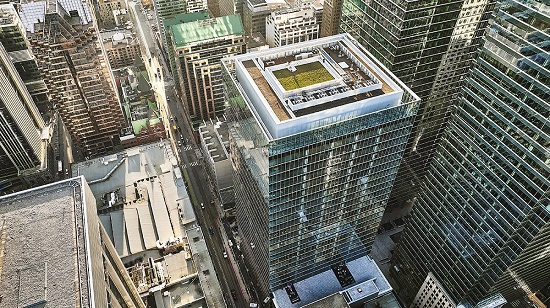 Friday, September 27, 2024
Friday, September 27, 2024  Friday, September 27, 2024
Friday, September 27, 2024 
by Tooey Courtemanche, CEO at Procore Technologies
Ever since I was young, I’ve been fascinated by how things are built. Much to my parents’ chagrin, I would often take our household items apart and reassemble them. It was no surprise when I started my career in the construction industry—first at a cabinetry shop and building contractor, then as a real estate developer, and later as a construction technologist.
Today, I’m just as fascinated by how things are built as I was back then, but over the years as I’ve built a career and a family, I’ve become interested in another part of the construction process: how we can build better for generations to come. The construction industry is one of the largest industries in the world and accounts for nearly 40% of all carbon emissions. The good news is that today’s technology enables teams to build more efficiently and sustainably than ever before—helping reduce rework, landfill waste, and the industry’s overall carbon footprint.
Many of Procore’s customers are leading the charge with innovative projects that are not only shaping the future of the construction industry, but also the world. Here are some of the most groundbreaking projects that are paving the way toward a more climate-conscious future.
Multiplex Canada, a Toronto-based general contractor, is at the forefront of sustainable construction. Along with their parent company, Multiplex Global, they were the first contractor in the world to sign the World Green Building Council’s Net Zero Carbon Buildings Commitment. They have also committed to reducing their greenhouse gas emissions by 63% before 2035 as part of the Science Based Targets initiative (SBTi), an initiative that aims to limit global warming to 1.5°C. Not only did Multiplex Canada set one of SBTi’s most ambitious targets, but it also became the first construction company in Canada—and the tenth from any sector—to commit to the SBTi.
Multiplex assesses the embodied carbon emissions across its projects and bid pursuits. The Bay Adelaide Centre North Tower, a Toronto project targeting LEED Platinum certification, was Multiplex’s pilot project for embodied carbon assessments. Using BIM technology and embodied carbon data from the Embodied Carbon in Construction Calculator (EC3) tool, Multiplex quantified the embodied carbon emissions associated with the main elements of the tower. This helped highlight the potential reduction in embodied carbon that can be achieved.
The building is also part of the existing Deep Lake Water Cooling system, a world-renowned district energy system that draws renewable cold water from Lake Ontario to cool buildings—essentially a sustainable alternative to air conditioning—that can reduce electricity use by 80%. What’s more, the building incorporates an innovative heating system that captures and reuses residual heat.
Read the full article on LinkedIn